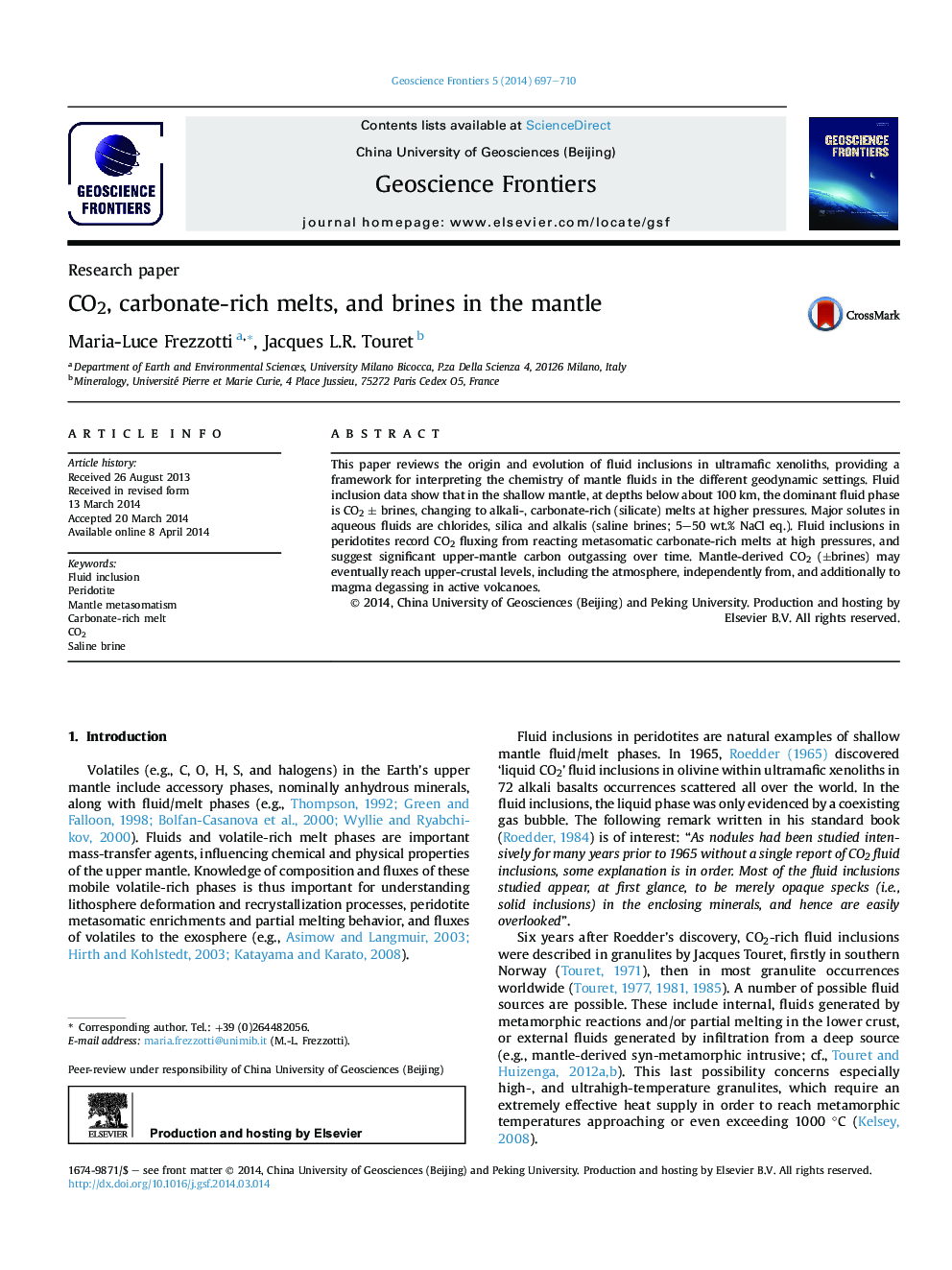| Article ID | Journal | Published Year | Pages | File Type |
|---|---|---|---|---|
| 4681679 | Geoscience Frontiers | 2014 | 14 Pages |
•CO2 ± brines are stable at P < 2–2.5 GPa, while carbonate-rich melts are stable at greater P.•Asthenospheric carbonate melts reacting with mantle minerals release CO2 fluxes (±H2O).•Fluxes of mantle-derived CO2 (±brines) phases may eventually reach the exosphere.
This paper reviews the origin and evolution of fluid inclusions in ultramafic xenoliths, providing a framework for interpreting the chemistry of mantle fluids in the different geodynamic settings. Fluid inclusion data show that in the shallow mantle, at depths below about 100 km, the dominant fluid phase is CO2 ± brines, changing to alkali-, carbonate-rich (silicate) melts at higher pressures. Major solutes in aqueous fluids are chlorides, silica and alkalis (saline brines; 5–50 wt.% NaCl eq.). Fluid inclusions in peridotites record CO2 fluxing from reacting metasomatic carbonate-rich melts at high pressures, and suggest significant upper-mantle carbon outgassing over time. Mantle-derived CO2 (±brines) may eventually reach upper-crustal levels, including the atmosphere, independently from, and additionally to magma degassing in active volcanoes.
Graphical abstractFigure optionsDownload full-size imageDownload as PowerPoint slide
